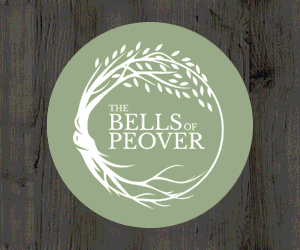Bird nerd and nature expert Dave Winnard shows us why he's a real fun guy
When Alston Bar & Beef invited us to join a gang of their bar staff on a trip to a secret, remote location, we wondered what we were letting ourselves in for. We hung around in the woods until a man in a maroon shirt polka-dotted with fox heads showed up and started enthusiastically rummaging in the undergrowth.
“Shall we have a game of edible deadible?” He grinned.
You can eat all mushrooms, but some only once.
Meet charismatic Dave Winnard of Discover the Wild. One of the North’s most respected foragers for his encyclopaedic knowledge of all things natural, Dave started foraging about 27 years ago when his grandma would take him out picking mushrooms.
“She used to pay me a penny for every common species I found, two pennies if it was uncommon and five if it was rare. And at the end of the walk there was an old fashioned sweet shop and whatever I’d earned in mushrooms I’d get in sweets.”

Alston take their team out once or twice a year to learn about foraging and get an in-depth knowledge of the ingredients that go into their bespoke gins and cocktails. Despite our various starting points - from urban nature-dodgers to keen fungi fanciers - we all learned a lot and it gave us an insight into the work Alston put in to making sure their staff know their stuff.
But before you read on, take note of Dave’s disclaimer, and be careful. If in doubt, don’t eat it!
Dave’s words of wisdom:
“Don’t eat anything unless I explicitly tell you you can eat it. Just because I pick something up, it doesn’t mean it’s edible and just because it’s edible to me, doesn’t mean it’s edible to you. I can eat peanuts but statistically someone around here, well it will kill them won’t it?”
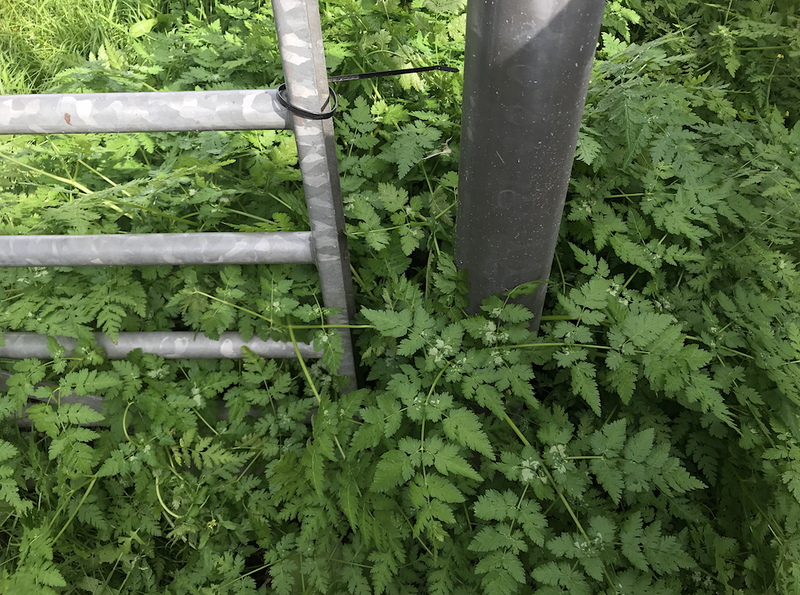
What: Sweet cicely
When: At its best in late May/June.
Used for: Tea, fruit desserts, as a herb, as a straw
Flavour: Sweet and aniseedy
We found sweet cicely growing amongst nettles, dandelions and burdock. It was healthy even in early autumn because it had been repeatedly trimmed. Dave says you can use all of the plant and that the stems are "the future of straws" because they're hollow and you can eat them when you're finished.
But he warned, "The umbellifer family contains some of the most poisonous plants in Europe. There's sweet cicely, cow parsley and wild carrot but also hemlock, drop wort and fool’s parsley. So the risk of poisoning is really high. Sweet cicely is the only one that smells of aniseed. You should leave the other edible members of this family alone unless you really know what you’re doing."
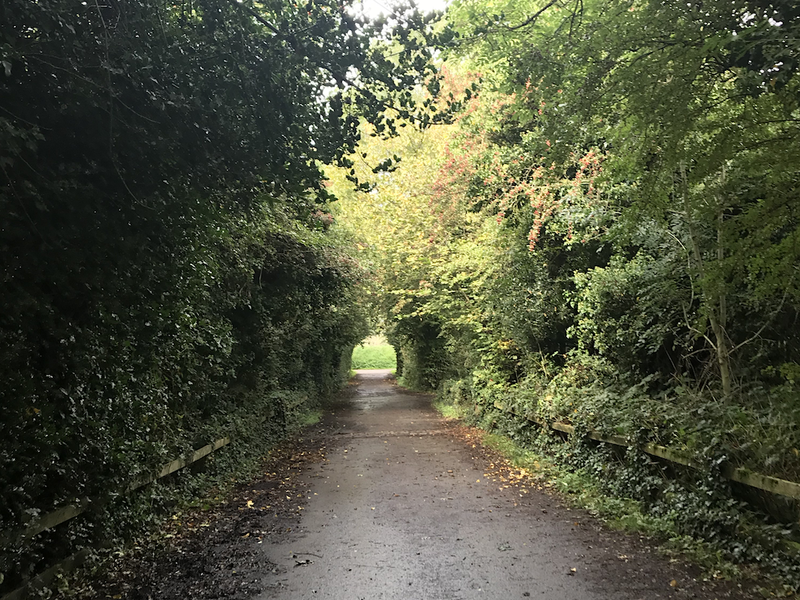
What: Rose hips
When: Late August, September and October
Used for: Syrups and cordials, itching powder
Flavour: Turkish delight
The rose hips we found were from the common dog rose. Dave explained, "If a plant’s got ‘dog’ in the title it usually means useless - but not the case with this one. The flowers of our native English roses don’t usually smell of anything but the hips are full of flavour. Whereas the flowers on the invasive Japanese rose smell like you’ve been punched in the face with a bar of Fry’s Turkish Delight. Its hips look like huge fat tomatoes but haven’t got much flavour. So you want Japanese rose flowers but English rose hips."
There's as much vitamin C in one of these hips as four oranges. Traditionally they were made into a supposedly healthy cordial after WW2 because vitamin C was hard to come by. However, rose hips need to be stewed up and strained to use them - when raw their fibrous seeds are often used as itching powder by naughty school kids - and boiling them kills the vitamin C and adding sugar to make the syrup outweighs any other health benefits. It tastes good though.
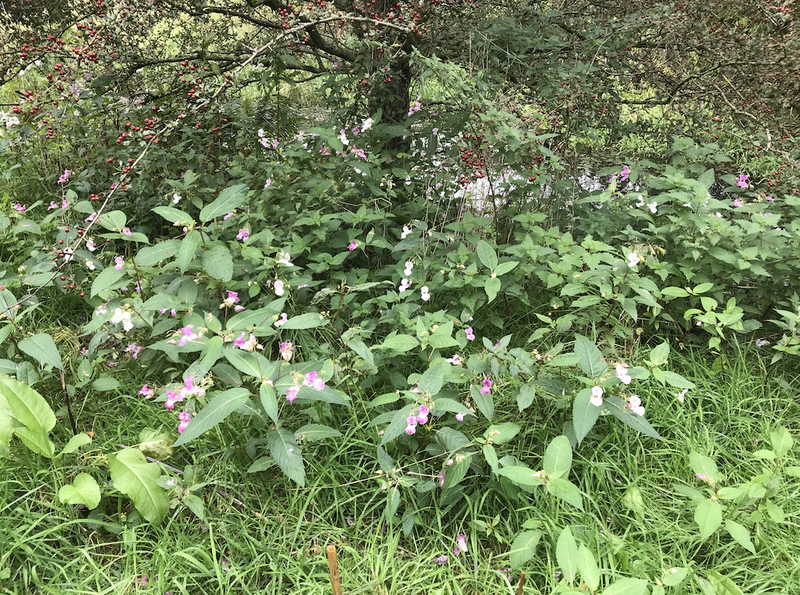
What: Himalayan balsam
When: Flowers June-October. Seeds August-October
Used for: Curry, bread, entertaining kids and honey bees
Flavour: Nutty with a hint of anise
The Victorians first brought this over - along with problematic plants like Japanese knotweed and giant hogweed - to emphasise their worldly wealth.The seed pods are a lot of fun for kids because they explode when you touch them as we 'adults' found out with squeals of delight. It's considered an invasive plant though so it's not encouraged to burst too many of the seed pods as it helps it to spread.
Dave said: "The seeds are delicious toasted. The rest of the plant is not really worthwhile and slightly toxic when young but only in the way that rhubarb leaves are. It’s not going to kill you but might make you feel unwell if you eat too much of it. Beekeepers love it because it’s in flower when the rest of our native plants aren’t."
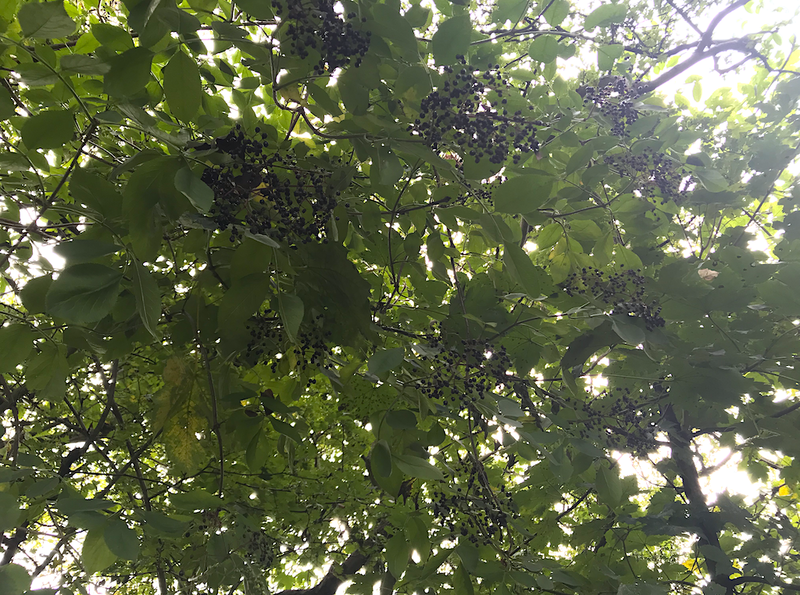
What: Elderberries and elderflowers
When: Flowers May-June, berries August-September
Used for: Cordial, jelly, wine
Flavour: Uniquely fragrant flowers, tangy berries
Elderberries can’t be eaten raw but the toxins are destroyed by heat, alcohol and vinegar. Dave's kitchen inspo: “Elderberry vinegar is the most amazing hedgerow staple - you’ll never buy balsamic vinegar again. Just find a sloe gin recipe, replace the sloes with elderberries, the gin with white wine vinegar and then sugar to taste.” The berries are rich in vitamin C and antioxidants - most flu remedies use elderberry extract. People also make wine from it but Dave isn’t a fan. “Someone gave me a bottle that they were really proud of and said ‘Try this, it’s like a good Merlot’. My only conclusion was they’d never had a good Merlot.”
Dave advises that whenever you’re picking flowers, just take a few from one bush then move onto another otherwise there will be none left to turn into berries. In full sun, a single bush can produce ten thousand flowers. There’s some interesting folklore too: “In parts of Wales, Scotland and Ireland they strongly believe that if you plant an elder in the back garden, it keeps the devil away. If you plant a rowan tree in the front garden it keeps witches away. There’s still loads of traditional cottages in Scotland and Wales that you drive past and there’s a rowan in the front, elder in the back.”
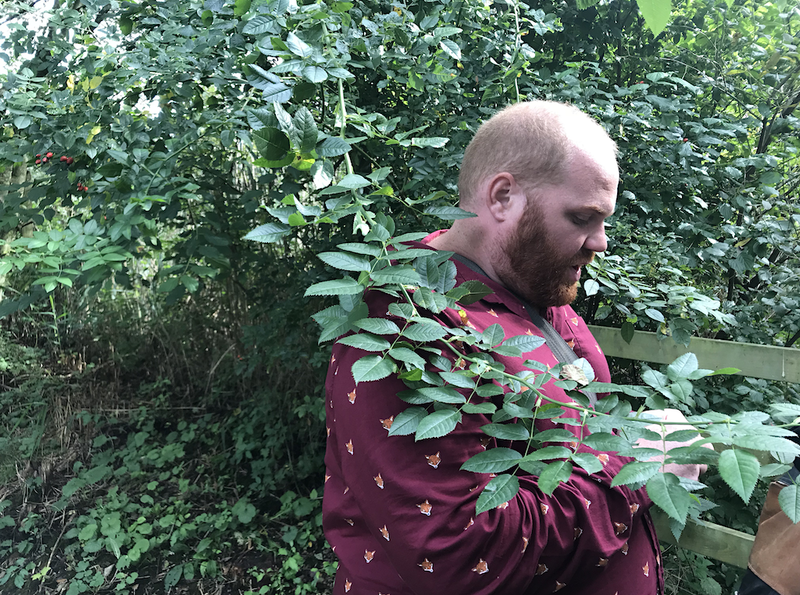
An important note on mushrooms:
According to Dave, "You can eat all mushrooms, but some only once.
"Smell is a helpful indicator of whether a mushroom is safe to eat. The agaricus family - field mushrooms, button mushrooms and portobellos - all smell 'mushroomy' but others smell earthy or fungal, some of aniseed, pear drops, ink, bitter almonds. If it smells of radish it’s poison pie. No prizes for guessing if that’s edible or dangerous."
When we say a mushroom is poisonous, what does that mean?
“We could be talking nerve damage, kidney failure, heart attacks, with some you’d be sitting on the toilet whilst leaning over the sink at the same time and you might be like that for 12 hours.
"All mushrooms are fungi but not all fungi are mushrooms. In the same way that all BMWs are cars, not all cars are BMWs. Mushrooms is a branch of the fungal kingdom which includes everything from the woodland mushrooms that you get on the ground to brackeny fungus and jelly ear but also mildews and galls. It also includes dandruff, athletes foot, thrush, the reason why you have stilton, beer, alcohol, yeast. Fungi are more closely related to you and I than they are to plants."
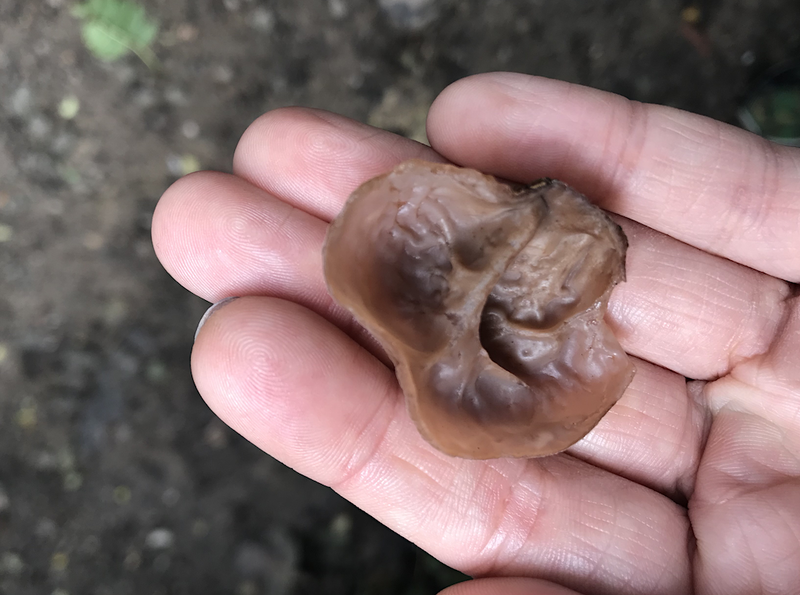
What: Jelly ear mushroom
When: All year
Used for: Chinese soups, dried noodles, an unusual Xmas treat
Flavour: Very mild, the texture is the important thing
This grows commonly on elder and used to be called Judas’ ear, supposedly because Judas Iscariot hung himself on an elder. It then became Jew’s ear and, in 2006, was changed to jelly ear because of the antisemitic connotations of calling mushrooms ‘Jew’s meat’.
Dave says: “Even healthy looking bushes of elder have dying limbs and that’s where you’ll often find jelly ear. Theoretically you can eat it raw but you’ve got a chance of getting an upset stomach from soil contamination so always clean it up first. The great thing with jelly ear is you can hold it up to the light and see if there are any maggots in it. There’s nothing worse than finding a kilo of porcini and cutting it in half when you get home and it’s riddled with maggots. In China and the Far East it’s commonly used in stews and soups but not so much in the UK. At Xmas at my house we rehydrate them in sloe gin then dunk them in melted chocolate and put them in the fridge to make a kind of chocolatey fungal wine gum.”
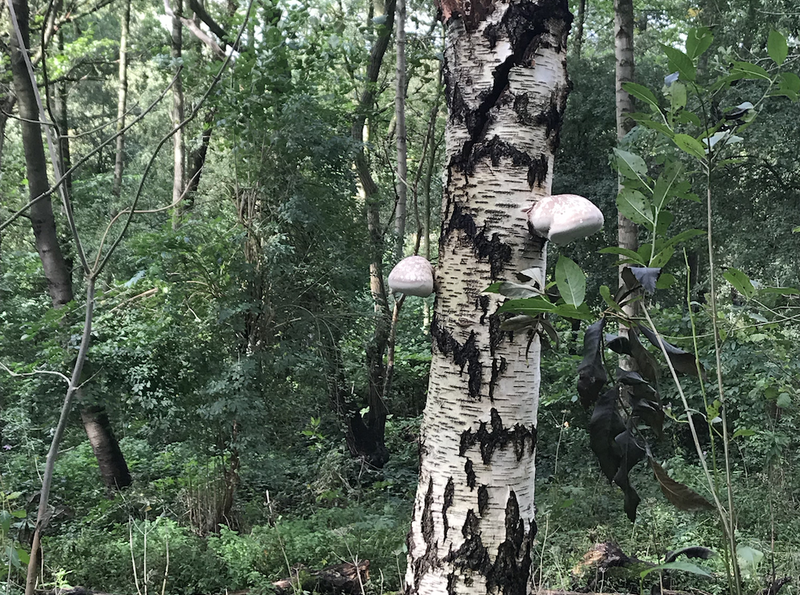
What: Birch polypore
When: August-November
Used for: Medicinal tea, plasters, blade sharpeners
Flavour: Bitter and earthy
“When Otzi the caveman was found in 1997 in a glacier in the Swiss Alps, in his perfectly frozen remains they found two species of fungus on him. One was called hoof fungus, which you can set fire to and it smoulders for days so you can carry it around and create fire wherever you need to. This was the other one, Birch polypore, meaning it has many pores and only ever grows on birch tress. So without knowing how to identify rotting wood, the fact that this fungus is growing on that tree means it must be a birch.
This fungi can reach almost the size of a dinner plate. The underside is so soft and has so many layers that you can cut strips and use them as plasters. It’s got antibacterial properties so if you’ve got cuts on your hands you can wrap it around and the fungus sticks to itself. As it dries it gets tighter. It’s antibacterial. You can make a tea with it but it tastes pretty revolting - like you’ve found some fungi growing on a rotting piece of wood, boiled it up and then drunk the liquid. The other thing it’s used for which was still being done into the early 1900s is slice it and dry it - it dries like a leather belt - then barbers can use it to sharpen their cutthroat razors.”
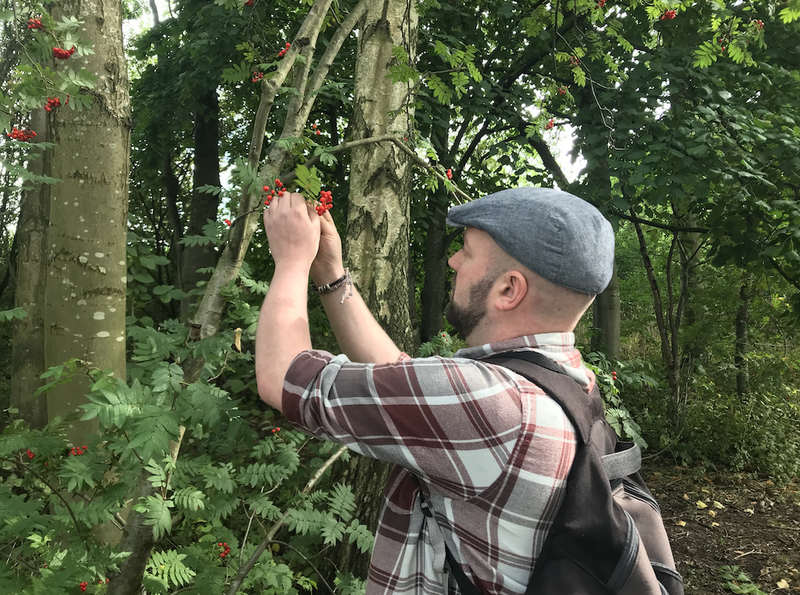
What: Sloes
When: October, November
Used for: Gin, wine
Flavour: Bitter when raw, plummy when cooked
“Sloes grow on the blackthorn tree. In most places in Greater Manchester this year they're in high demand because they all seem to have succumbed to a fungus called pocket plum - probably because of the weather at the time when the fruits were forming. When the newspapers find out, it’s always an excuse to drive the price of sloe gin up, but most companies get their sloes from Bulgaria, Moldova or Romania or at least bolster the UK ones with them.
The blackthorn gets its name because of the thorns which are absolutely vicious. They are covered in all sorts of bacteria, so when the rangers are cutting it back they need to be really careful because a few have fallen on spikes like that and then they get septicaemia. The first thing you have to do if you do that is get treated for blood poisoning.”
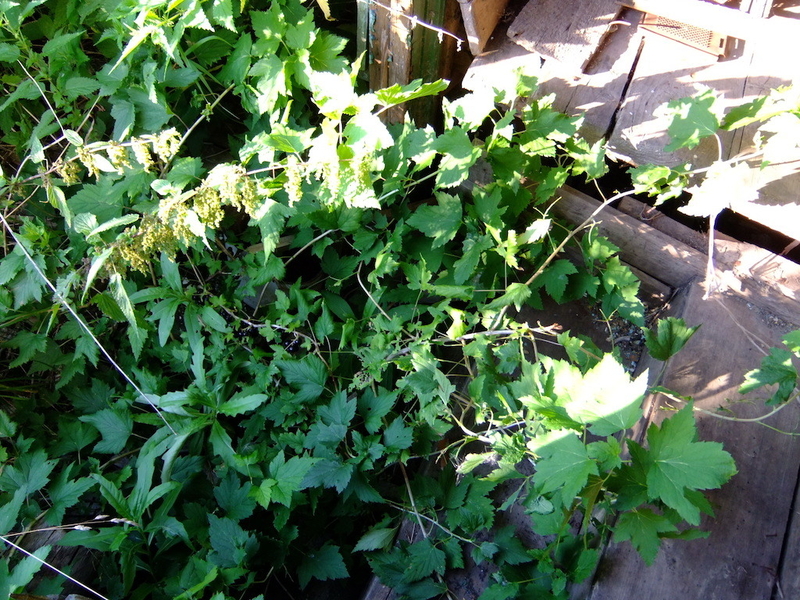
What: Blackcurrant leaves
When: All year
Used for: Cordial
Flavour: Ribena
According to Dave, "The difference between blackcurrant, redcurrant and whitecurrant is that blackcurrant leaves smell strongly of the berries and the others don’t. Ribena own something like 96% of all blackcurrants grown in the UK, which is why you don’t see them often in supermarkets.
In spring, when the leaves are soft and fresh, we stew them up for five days - equal parts nettle leaves and blackcurrant. Just make a simple syrup add citric acid and leave it for five days. Nettles are really rich in iron so it goes a lovely deep coppery colour but if you were blindfolded and tasted it you’d swear it was purple because it tastes so fruity. If you don’t net them the birds will hammer the fruit, but the leaves you can get all the time."
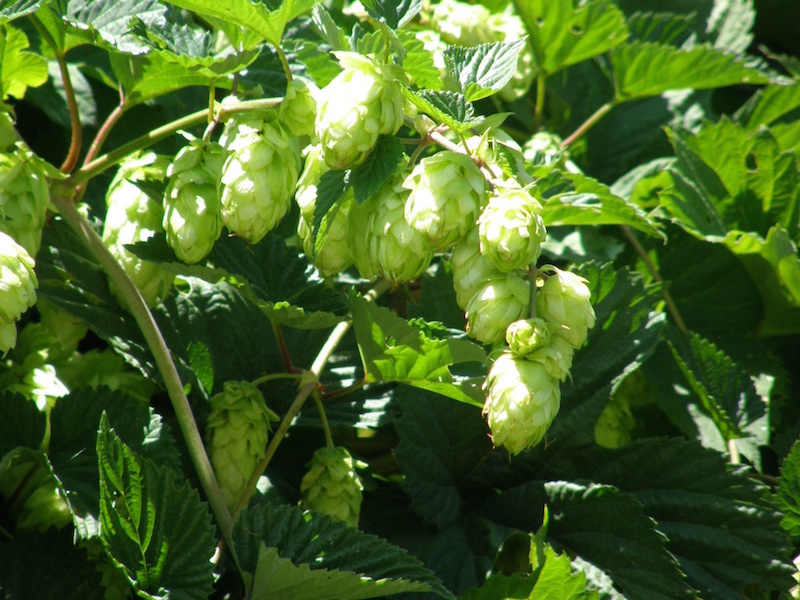
What: Hops
When: March-June
Used for: Beer
Flavour: Various bitter, floral, fruity and citrus flavours
Dave explained that plants evolve two ways: "They either grow a strong stem and grow upright or cheat and climb up things that have already done the hard work."
We found all sorts of plants intertwined like brambles - whose thorns help them to grip onto other plants - and white bryony dangling down through the ivy which was growing through hawthorn. Another climber we found was hop. You know, the one you make beer with.
Dave told us that hops have become more frequent as a wild plant in the UK. "It was introduced from the continent and over the years we’ve developed ones that can grow here but, the more you mess around with plants, you have to do grafting or cuttings to make sure you get exactly the same variety otherwise it starts reverting back to what it should be in the wild. It doesn’t want to be here because it’s too miserable for it really. You can’t make beer from the leaves, you need the flowers and seeds for that. There are some places in Greater Manchester where you get wild hops but so many brewers now are going out looking for them that you’d struggle to beat them to it these days."
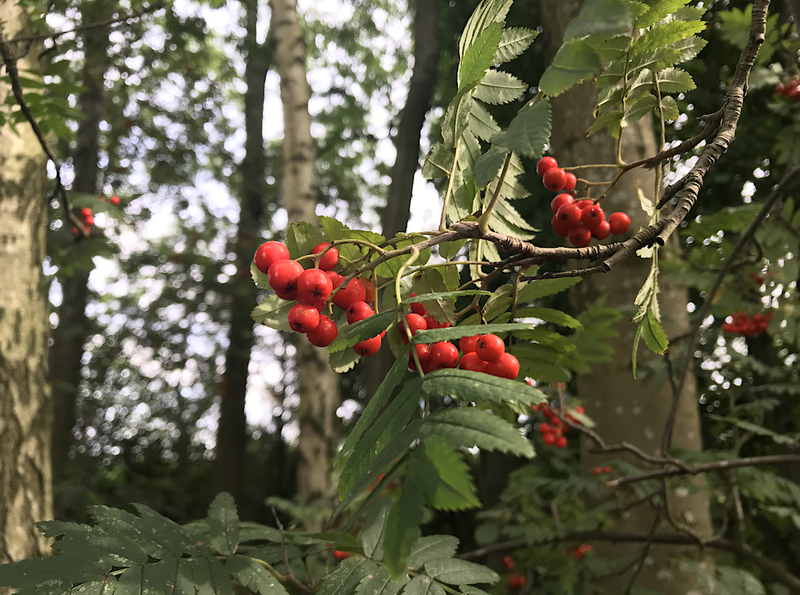
What: Rowan
When: Late summer, early Autumn
Used for: Rowan and crabapple jelly
Flavour: Sharp and bitter
Dave showed us, "If you look at the bottom of the berry you can see a five pointed star. Although we associate the pentagram with evil and witchcraft, it’s actually a protective symbol. So the fact that this tree is covered with all these protective symbols was considered a good thing. Treat it like elder: straight off the bush it’s not going to give you too many problems other than the shits, but cooked in alcohol or in vinegar it’s fine. Rowan and crabapple jelly is the go-to recipe. In parts of Eastern Europe they make rowan gin or vodka instead of sloe gin.
People think that if it’s a good berry season - which it has been this year - then it’s going to be a very cold winter. But trees can’t predict the future, they react to the past. So that means in May when this tree was in flower it was nice and sunny and got well pollenated which is why it’s produced so much fruit. When they are out in the open on the hedgerows they are far denser than these spindly woodland specimens. You get them a lot in urban areas because they will grow in practically any soil condition so they get planted in car parks and housing estates. They're dead easy to find."
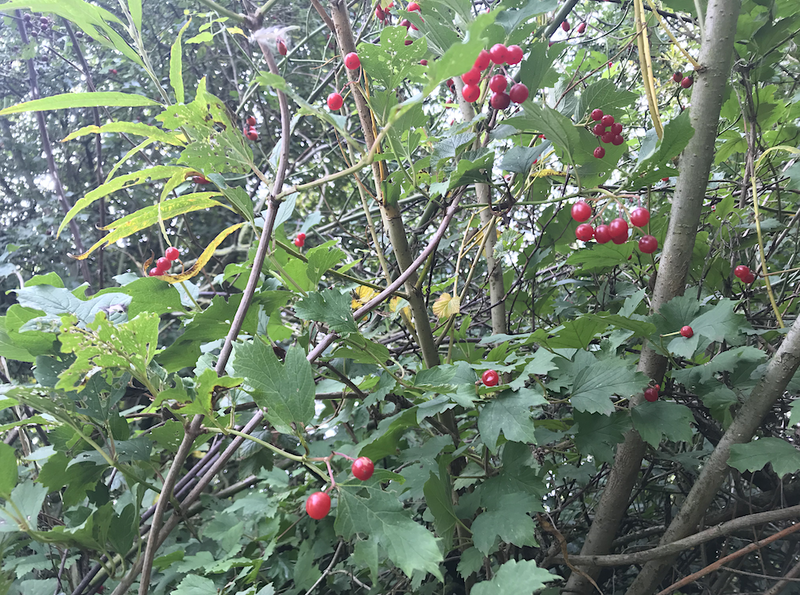
What: Hawthorn
When: Leaves and flowers early to mid-spring, berries early to mid-autumn
Used for: Jelly, tea, lowering BP
Flavour: Appley
"Hawthorn is edible with caveat. If you’ve got low blood pressure you can’t really use it because it contains chemicals that widen the arteries, immediately reducing blood pressure. If you’ve got high blood pressure, hawthorn tea’s good for you. It doesn’t taste great but it’s good for you.
The leaves are edible and the flowers in the spring. The berries taste a bit bland raw but when you cook them they taste like stewed apples because technically they are far more closely related to apples than they are to berries. Hawthorn schnapps is delicious. Hawthorn and crab apple jelly is the other go-to hedgerow recipe. They’ve got quite a large seed in them so you’re never going to make jam with them but they are pretty good for jellies."
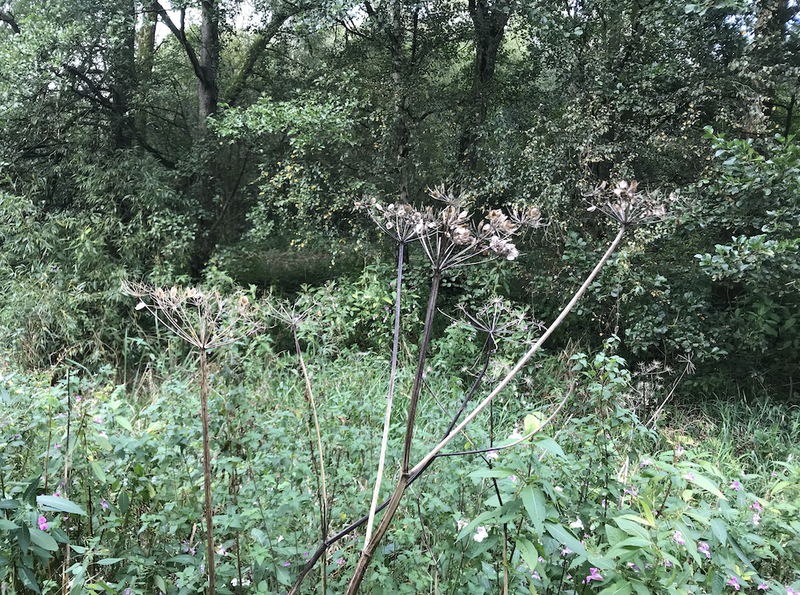
What: Common Hogweed seeds
When: Autumn
Used for: Infusing spirits
Flavour: Spicy, fragrant, warm citrus
If you rub them between your fingers you'll notice that common hogweed seeds have a lovely, spicy smell. Dave said there are lots of different, interesting spices out there - you’ve just got to know where to find them. This one is also a member of the umbellifer family so care needs to be taken when identifying it.
"Be careful not to take giant hogweed rather than common hogweed, because if you handle giant hogweed it will burn you." Common hogweed is often used to infuse gin and has a flavour profile similar to cardamom and orange but is a bit more of an interesting, locally foraged alternative.

What: Blackberries
When: August-September
Used for: Eating raw or cooked in pies, crumbles, cocktails, infusions and more
Flavour: Fruity and tart
There are many varieties of blackberry. Dave says that whenever you go for a walk and you find blackberries, try them, mark them out of 10 then walk a bit further and try some others because they won’t be the same variety.
“Some berries fruit really early in the season, some really late. There are big berries, small berries, juicy berries, some have loads of seeds, some not many. The bramble can have white, red, pink, yellow or purple flowers and the leaves can be round, cut or triangular. The stems can be thick, thin, spiky, not very spiky and everything in between.” Dave says the ones that are in full sun are the best ones. Woodland ones which like the shade more get a lot more growth but the berries aren’t as flavourful.
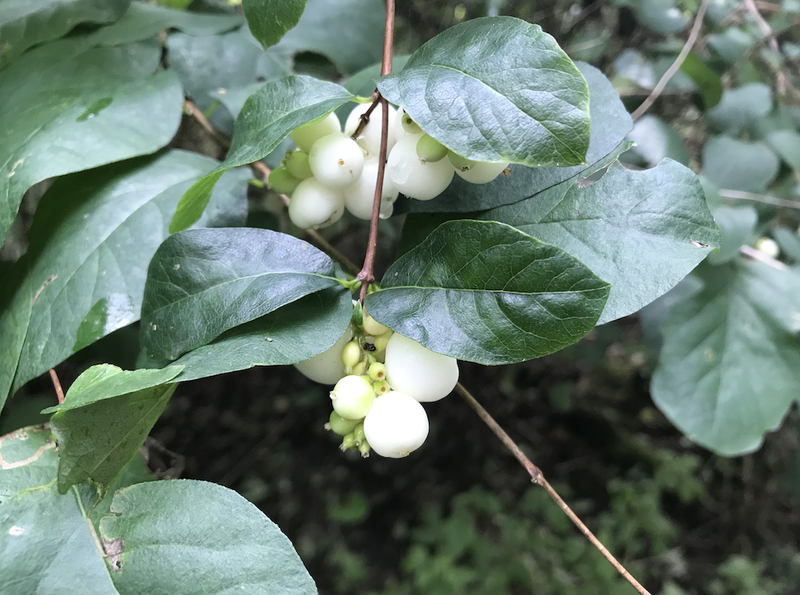
Some poisonous species we came across:
Snowberries (pictured) are striking bright white berries but are not edible.
Guelder Rose are temptingly juicy red berries and similar looking to Hawthorn. Dave told us "It’s one of the few poisonous red berries we have in the UK. A lot of people are wary of anything red. But strawberries, red apples, redcurrants, cherries, rosehips, hawthorn, raspberries - quite a lot of red things are edible. It’s not as straightforward as saying ‘red is dangerous’."
Dogwood berries look like tiny blueberries.
Dave said: "The good thing with poisonous species is they’re usually bitter. You’ve got more bitter receptors on your tongue than anything else because bitter usually means poison. As soon as you taste it, you want to spit it out so you’re never going to consume enough of the poison. What you need to be really wary of is the stuff that’s poisonous and tastes delicious. Death cap mushroom tastes amazing according to people who have survived eating it. Hemlock water drop wort tastes really good, like celery. Hemlock doesn’t, it tastes like rat, a really stinky, rodenty smell."
A final word on legality:
Dave explained that for picking things like flowers fruits and fungi you need the landowners permission otherwise it’s technically theft. This could potentially mean a prison sentence so always ask the landowner if you can, they can only say no. Sometimes the plants you want to forage are considered a nuisance so you could be doing them a favour.
Most of the area we covered was council owned. Dave told us that in Salford, a number of green areas have groups that go out once a month who do whatever needs doing - whether it’s getting rid of Himalayan Balsam, litter picking, brash clearing - and in return they can take berries, apples or anything else.
Want to test Alston's bar staff on their forage knowledge?
Alston Bar & Beef, Cathedral St, Manchester M4 3TR






